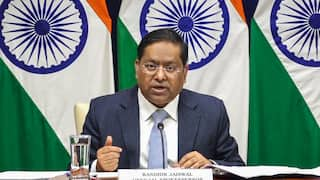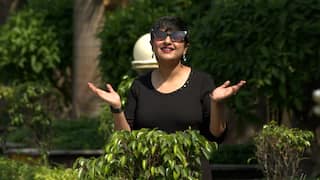'Epochal', 'Carrot & Stick', ‘Once-In-A-Century’: Some Of The Iconic Union Budgets That India Saw In Past
Union Budget 2022: As India awaits the Union Budget for 2022-23 that Finance Minister Nirmala Sitharaman will present on February 1, here are some of the iconic budgets that India has seen in past.

New Delhi: Union Finance Minister Nirmala Sitharaman will present Union Budget, her fourth consecutive one, on Tuesday, February 1.
She is only the second woman finance minister of India, after former prime minister Indira Gandhi who held the additional portfolio of finance.
Sitharaman’s 2022 Union Budget is going to be her second last before the Narendra Modi government’s second term comes to an end.
All eyes are on the budget as the country still reels undet the impacts of the Covid-19 pandemic that hit in the beginning of 2020.
India’s Union Budget has a fascinating history. Here are some of the iconic budgets that India has seen.
'Black Budget' - 1973-74
Yashwantrao B Chavan, finance minister in the then Indira Gandhi government, presented the budget in 1973-74, when India was going through an acute financial distress. The fiscal deficit was Rs 550 crore during that year, because of which the budget was called the Black Budget.
'Carrot & Stick Budget' - 1986-87
The 1986-87 Union Budget, presented by VP Singh for the Congress government, was called the 'Carrot and Stick' budget as it offered both rewards and punishment. It saw the first step towards dismantling licence raj, and the budget introduced MODVAT (Modified Value Added Tax) credit to lower the cascading effect of tax. The budget also launched an intense drive against smugglers, black marketers, and tax evaders.
Landmark 'Epochal’ Budget - 1991-92
Manmohan Singh's 1991 budget, dueing the PV Narasimha Rao government, ended the licence raj and an era of economic liberalisation began. It is known as 'Epochal Budget', which came at a time when India was on the brink of an economic collapse. The budget saw customs duty getting slashed from 220 per cent to 150 per cent, and steps taken to promote exports.
‘Dream Budget’ - 1997-98
P Chidambaram’s 1997-98 budget was called a 'Dream Budget' as lower tax rates to increase collections, using the Laffer Curve principle. The maximum marginal income tax rate for individuals was slashed from 40 per cent to 30 per cent, and to 35 per cent for domestic companies. Some major tax reforms were introduced, which included a voluntary income disclosure scheme to recover black money. Customs duty was cut to 40 per cent and the excise duty structure was simplified.
Millennium Budget - 2000-01
Yashwant Sinha's Union Budget in 2000-01, during then then Atal Bihari Vajpayee government, phased out incentives on software exporters, and also lowered customs duty on computer and computer accessories, among 21 other items. The Millennium Budget set India on the road to information technology (IT) boom.
Rollback Budget - 2002-03
Yashwant Sinha's 2002-03 budget, however, is remembered for several u-turns. The government had to withdraw many proposals in the budget, which came to be known as the ‘Rollback Budget’.
‘Once-in-a-Century Budget’ - 2021-22
When Nirmala Sitharaman presented her first pandemic budget, on February 1, 2021, she called it 'once-in-a-century budget'. She claimed it looked to revive the economy by investing in infrastructure and healthcare, and relying on robust tax collections and an aggressive privatisation strategy.
(With PTI)






































